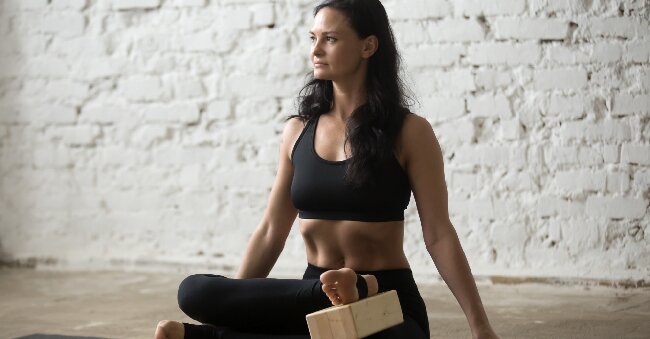
Essential Yoga Brick Techniques for Beginners: Enhance Your Practice
Whether you’re new to the world of yoga or looking to enhance your practice, yoga bricks could be a beneficial prop for you. Let’s delve into what yoga bricks are, their usefulness for beginners, tips on choosing the right one, and techniques for incorporating them into your practice. We’ll cover a range of poses, from standing to restorative, so grab your mat and get ready to elevate your yoga journey with the assistance of yoga bricks.
What Are Yoga Bricks?
Yoga bricks are tools commonly used in yoga practice to improve stability, support, and balance during different poses. These props are particularly beneficial for individuals, especially beginners, as they help enhance alignment and overall comfort.
By offering a stable base and helping with stretching, yoga bricks enable practitioners to safely advance their practice and approach poses with increased assurance. The additional height and support provided by the bricks also help in maintaining correct posture and engaging muscles effectively, resulting in a more productive and satisfying yoga session.
Why Are Yoga Bricks Useful for Beginners?
Yoga bricks are commonly used by beginners as they offer crucial support, assist in maintaining proper alignment, and increase comfort, which helps in establishing a strong foundation for their yoga practice.
These props are essential in helping beginners feel more secure and steady in various yoga poses, enabling them to concentrate on correct form and alignment without worrying about losing balance. By providing added height or stability, yoga bricks allow individuals to progressively deepen their stretches and poses, supporting a gradual advancement in their practice.
How to Choose the Right Yoga Brick?
Selecting the appropriate yoga brick is important for ensuring proper support, stability, balance, and alignment in one’s practice.
When choosing a yoga brick, it is crucial to consider individual support requirements. Opt for a brick that offers sufficient support for body weight and yoga poses. Consider stability needs – a firmer brick may be favored by advanced practitioners, while a softer one might be beneficial for beginners. The chosen brick can significantly enhance balance during difficult poses and improve overall alignment. By aligning with body mechanics, the correct brick can enhance the practice experience and aid in achieving increased mindfulness and focus.
What Are the Best Yoga Brick Techniques for Beginners?
Incorporating yoga brick techniques into their practice can significantly enhance the experience for beginners by providing essential support, alignment, and modifications in various poses. Using yoga bricks can help individuals new to yoga gradually improve their alignment and balance in poses, helping them build strength and stability over time.
One effective technique involves using a brick to bring the floor closer to the practitioner, aiding in achieving proper alignment in forward folds and seated poses. Placing a brick under the hands in standing poses like Triangle or Half Moon can provide extra support, allowing beginners to extend further and deepen their stretch with confidence.
1. Standing Poses
The incorporation of yoga bricks in standing poses can assist beginners in improving their alignment, stability, and strength. This is achieved by providing additional support and enhancing balance.
The use of yoga bricks is particularly advantageous for beginners as it enables them to gradually enhance strength and flexibility while maintaining proper form. Placing the bricks under the hands in poses like Warrior I or Triangle Pose can aid in achieving the correct alignment of the spine and hips. This additional support allows individuals to concentrate on grounding through their feet and engaging the core muscles effectively.
Yoga bricks function as a useful tool in establishing a strong foundation for standing poses, thereby enhancing overall body awareness and stability. Through strategic utilization of yoga bricks, beginners can safely deepen their practice and progress towards more challenging poses with confidence.
2. Balancing Poses
Incorporating yoga bricks during balancing poses can provide essential support and stability, particularly beneficial for beginners looking to enhance their balance and effectively engage their core muscles.
By integrating yoga bricks into your practice, you can improve your stability and gain a deeper insight into each pose. To utilize the bricks efficiently, position them under your hands, forearms, or feet as required by the pose. For example, during tree pose, placing a brick under your standing foot can enhance stability. Experimenting with various ways to integrate the bricks can help you discover the most suitable approach for your body, allowing you to concentrate on alignment and strength while maintaining balance.
3. Seated Poses
When yoga bricks are used in seated poses, they can provide extra support, enhance flexibility, and improve posture alignment, particularly benefiting beginners by ensuring comfort and correct form.
Incorporating yoga bricks into one’s practice not only helps in deepening stretches but also offers stability, which is advantageous for those who are new to yoga. Proper brick placement is crucial in maintaining alignment during poses, reducing the risk of strain or injury.
Exploring different brick positions allows individuals to customize the support to their specific requirements, making their practice more accessible and enjoyable. The use of yoga bricks in seated poses promotes a mindful approach to yoga, fostering a sense of ease and progress in one’s practice.
4. Restorative Poses
When practicing restorative poses, yoga bricks can be helpful tools for relaxation, offering health benefits, promoting body awareness, and enhancing mindfulness for beginners seeking rejuvenation.
Using yoga bricks in restorative poses can provide essential support for achieving proper alignment, particularly for beginners who may struggle with flexibility or balance. By incorporating props like bricks, individuals can ease into postures comfortably, reducing strain on muscles and joints while enabling longer holds that promote relaxation and release of tension. These props not only establish a safe and stable foundation but also aid in developing a deeper connection to the body and breath, encouraging a sense of embodiment and presence in the practice.
5. Modifications for Challenging Poses
Using yoga bricks can enhance safety and alignment for beginners, allowing them to progress in their practice by building strength and flexibility while minimizing injury risk. These props provide crucial support for advanced postures, helping practitioners deepen stretches and maintain proper form. Incorporating bricks fosters confidence and understanding of poses, facilitating a more controlled practice and enabling individuals to push their boundaries safely on their yoga journey.
How to Incorporate Yoga Bricks into Your Practice?
Utilizing yoga bricks in your practice can have several benefits such as improving alignment, offering necessary support, increasing comfort, and establishing a routine that encourages stability and balance.
By integrating yoga bricks in your practice in innovative ways, you can deepen your stretches, maintain correct posture, and build strength in various poses. Whether you are a beginner or a seasoned yogi, using these props can introduce a new element to your practice. Placing the brick under your hand during a high lunge can raise your torso and improve your alignment, while positioning it between your thighs in chair pose can activate your inner thighs for increased stability. Experiment with different positions and placements to determine what suits you best.
1. Start Slow and Focus on Alignment
When incorporating yoga bricks into a practice, it is recommended to start slowly and focus on alignment to ensure proper support, stability, and gradual improvement in poses.
For beginners, it is important to remember that yoga bricks are intended to assist in finding optimal alignment and balance. Start by integrating them into basic poses such as Tadasana (Mountain Pose) or Adho Mukha Svanasana (Downward-Facing Dog). Pay attention to how the bricks support the body and help in maintaining proper form.
2. Use Bricks as a Prop for Support
Yoga bricks can be used as supportive props in a yoga practice to enhance stability, provide support, and improve balance in different poses. These props are versatile and can offer a firmer foundation for poses such as Triangle or Half Moon, aiding in achieving proper alignment and avoiding overstretching.
Whether it involves elevating the hips in seated poses or offering a stable base in standing poses, yoga bricks can benefit practitioners at any skill level. Whether someone is a beginner focusing on flexibility or an advanced yogi refining alignment, the use of bricks can enhance their practice and make challenging poses more attainable.
3. Experiment with Different Positions
Exploring various positions and placements of bricks in a yoga practice can enhance flexibility, support, and alignment, contributing to a comprehensive experience.
Through the exploration of different brick positions and placements, beginners can progressively enhance their flexibility and feel better supported in their practice. Utilizing prop-assisted variations can offer valuable insights into the intricacies of each pose, facilitating a deeper comprehension and an opportunity to refine alignment. This experimentation enriches the yoga experience, creating avenues for personal growth and development on the mat.
What Are the Common Mistakes to Avoid When Using Yoga Bricks?
Using bricks of incorrect sizes can result in instability during poses, potentially leading to strain or injury. It is essential to ensure that the bricks you use are suitable for your body’s requirements, offering the necessary lift and support while maintaining proper alignment.
Over-reliance on props like bricks can impede progress by hindering the development of core strength and stability. Failing to pay attention to breath control while using props may also limit the practice’s benefits, as proper breathing enhances mindfulness and facilitates deeper stretches.
1. Using the Wrong Size or Type of Brick
An important mistake to avoid is using an incorrect size or type of yoga brick, as it can affect support, alignment, and safety during practice.
When choosing a yoga brick, practitioners should take into account their body proportions and flexibility levels to select the appropriate size that offers sufficient support in different poses. The material of the brick can affect its firmness and longevity, which can affect its ability to improve alignment and prevent injuries. Acquiring the right yoga brick that suits individual requirements can greatly enhance the practice, fostering a safer and more beneficial yoga experience.
2. Relying Too Heavily on Bricks for Support
Avoid relying too heavily on yoga bricks for support, as it could impede your progress, comfort level, and overall development in your yoga practice. While it’s understandable that yoga bricks can offer stability and assist in certain poses initially, it’s crucial to recognize them as temporary aids rather than permanent solutions.
By gradually decreasing your reliance on these props, you enable your body to naturally strengthen and adapt, leading to a more comprehensive practice. Embracing a mindset that utilizes props as tools rather than crutches will not only enhance your strength and flexibility but also enrich your overall yoga experience.
Aim for a practice that encourages independence and growth, allowing you to fully explore your body’s capabilities.
3. Forgetting to Breathe and Relax into Poses
It is important to focus on your breath and relax into poses when using yoga bricks, as mindful breathing and relaxation play a significant role in the mind-body connection.
By integrating conscious breathing and relaxation techniques into your yoga practice, one can strengthen the connection between the body and mind. The use of yoga bricks as a support can aid in achieving proper alignment and stability in poses, enabling individuals to delve into deeper levels of relaxation and concentration. Through the combination of breath regulation and deliberate relaxation, practitioners can enrich their overall experience on the mat and foster a sense of mental clarity and inner peace. Embracing these mindful practices can offer a comprehensive approach to yoga, nurturing both physical and mental well-being.
4. Not Adjusting Bricks for Different Poses
When positioning yoga bricks, it is essential to consider how they can improve the practice by offering the right support and alignment. For example, in a seated forward bend, placing the bricks under your hands can raise the floor closer to you, making the pose more accessible and comfortable. Conversely, when doing a supported bridge pose, stacking the bricks at different heights can help open up the chest and shoulders effectively. By carefully adapting the placement of the bricks, you can customize the support for each pose, promoting correct form and alignment.




No Comments